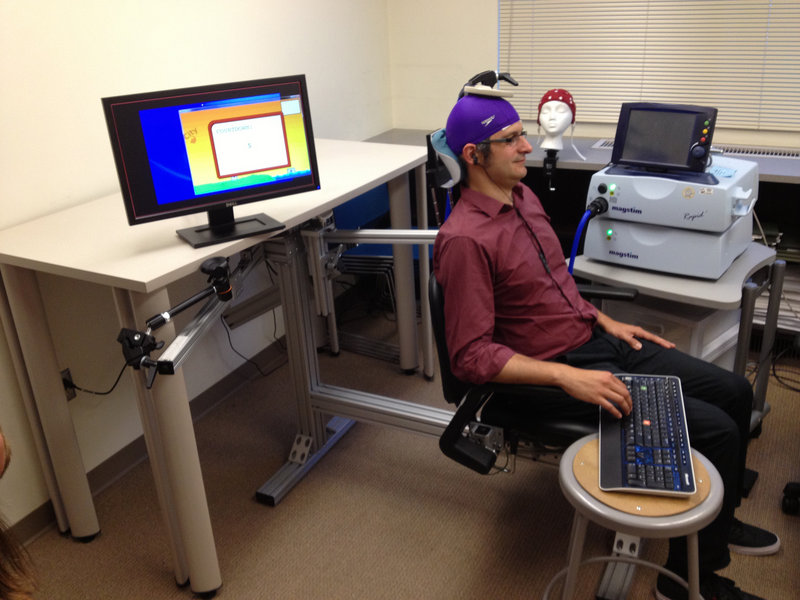So it turns out a bit of mind control might be possible, after all.
Scientists had already shown that a human could send an electronic brain signal to a rat, prompting it to wiggle its tail. Now, two University of Washington researchers say they have demonstrated that one man’s thoughts can control another man’s movements.
First, they placed electronic probes against their heads. Then one man looked at a computer game on a screen and thought about what move he wanted to make. Sure enough, the other man, who was across campus with no view of the screen, almost instantaneously moved his right index finger to make that move. He said it had the sensation of a nervous tic.
“I felt a bit like Alexander Graham Bell working on the first telephone,” said Rajesh Rao, the computational neuroscientist whose brain sent the signal.
Although the scientists acknowledge their work is still in rudimentary stages, they say it suggests a future where people may one day be able to communicate directly brain-to-brain. In the past two decades, neuroscientists have made dramatic advances in connecting human brains with computers, largely in the hope of helping disabled and paralyzed patients communicate with others and operate prosthetic limbs.
“We have demonstrated the first human brain-to-brain interface for a very simple form of transfer of information,” Rao said. Moreover, the prior brain-to-brain interfaces involved electrodes implanted directly into rat brains, “so this is the first noninvasive brain-to-brain interface as well.”
“It felt a bit surreal,” Rao added.
The scientists cautioned this system only reads simple brain signals and not thoughts.
“I’ve always been a fan of ‘Star Trek,’ but we’re not really at the point of the Vulcan mind meld yet,” Rao said. “The engineering has a long way to go before we can demonstrate anywhere near the kind of brain-to-brain interfaces seen in science fiction.”
“It’s also a completely voluntary process, so there’s no specter of mind control in secret,” Rao said. “You can’t read somebody’s mind or move somebody’s body without them knowing about it — they both have to have devices on or against their heads.”
Neurobiologist Miguel Nicolelis at Duke University, who in February reported he and his colleagues linked two rat brains together intercontinentally, said this latest research was rudimentary at best. “This is more like one brain sending an electric shock to another than a true interface,” Nicolelis said. Researchers at Harvard University followed with their human-to-rat experiment, announced in April.
In their Aug. 12 experiment, Rao wore a cap studded with electrodes that read electrical activity in his brain while he played a simple video game with only his mind. Each time he was supposed to hit a button to shoot a cannon at a target, a pirate ship, he imagined moving his right hand, although he was careful to not actually move it.
His colleague, cognitive neuroscientist Andrea Stocco, sat in a lab a quarter mile away, with a powerful magnetic coil against his head in the area of the left motor cortex, which controls motions in his right hand. Rao’s brain signals were transmitted over the Internet to a computer that prompted the magnetic coil to stimulate Stocco’s brain, causing him to move his finger. By the final session of the experiment, Rao successfully hit all the targets with each attempt.
Send questions/comments to the editors.



Success. Please wait for the page to reload. If the page does not reload within 5 seconds, please refresh the page.
Enter your email and password to access comments.
Hi, to comment on stories you must . This profile is in addition to your subscription and website login.
Already have a commenting profile? .
Invalid username/password.
Please check your email to confirm and complete your registration.
Only subscribers are eligible to post comments. Please subscribe or login first for digital access. Here’s why.
Use the form below to reset your password. When you've submitted your account email, we will send an email with a reset code.